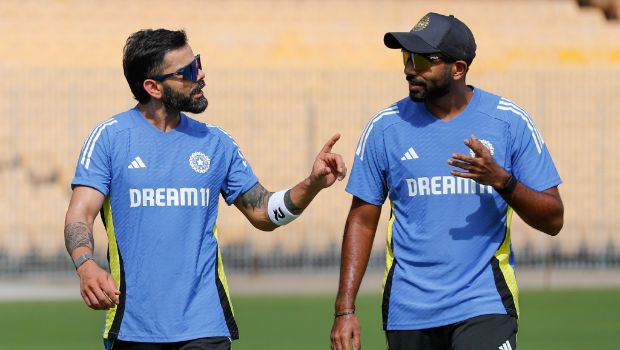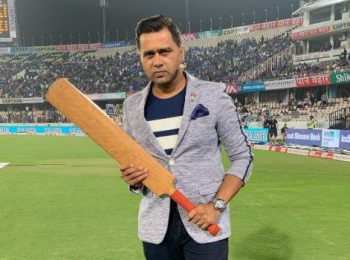India’s 2024-25 Test season starts against Bangladesh in Chennai on Thursday, but it is impossible to shake off the feeling that thoughts are firmly trained on the team’s five-match tour of Australia in November.
The nearly six-month gap since India’s previous Test match, versus England in March, has meant that players who feature in white-ball cricket have had their hands full whereas the ones coming back from injury have only had the Duleep Trophy to show for. India are strengthened by the return of Virat Kohli, Rishabh Pant and KL Rahul and have added a new face, the left-arm seamer Yash Dayal, to their squad for the first of two Tests against Bangladesh.
After Bangladesh leave, India host New Zealand for three Tests before heading off to Australia for five matches. The goal will be to land in Australia with five consecutive wins under their belts, and thus the way in which Rohit Sharma’s various playing 11s pan out across these two series will be very interesting to watch.
Jasprit Bumrah is part of the squad for the first game versus Bangladesh, but it looks nigh on impossible that he will play all five Tests at home. Mohammed Siraj is also coming off an injury concern, and his workload will surely be managed as well with an eye on the tour of Australia. Until Mohammed Shami proves he is fit to return to Tests, the selectors will have to see if the one-Test-old Akash Deep can cut it and whether the uncapped Dayal is Test material.
On the fringes are Mukesh Kumar (three Tests old) and the uncapped trio of Harshit Rana, Arshdeep Singh and Avesh Khan. India will not play more than two spinners in their 11 when the Australia series starts, and so Kuldeep Yadav finds himself with the unenviable task of trying to leapfrog R Ashwin and Ravindra Jadeja come November 22 at Perth.
Most of India’s batting picks itself, but there is solid competition in the middle order. Pant’s return leaves Dhruv Jurel, who impressed during his debut Test series against England and whose glovework was outstanding in the first round of the Duleep Trophy, to vie for one spot alongside Rahul and Sarfaraz Khan who did well during that same series six months ago. Sarfaraz played once Rahul was ruled out of the series, and displayed the awareness and skill required to succeed in home Tests. But there remains a perception, unfair since he has only played in India, that he is something of a home bully. And shaking that ahead of the Australia tour is going to be a massive hurdle for Sarfaraz, who hasn’t helped his case with scores of 9, 46 and 16 in two Duleep Trophy games.
Rahul averages 41.24 from 17 home Test matches and 31.05 away, but in Australia his average is a lowly 20.77 after nine innings. So, it is not as if he has excellent numbers to keep Sarfaraz out of the reckoning come November. Jurel’s performances against England suggest he could get into the 11 based on his batting alone.
This number five spot, thus, remains the only real debate regarding India’s batting, since Rohit, Yashasvi Jaiswal, Shubman Gill and Virat Kohli make up the top four without any argument.
With an eye on next summer’s World Test Championship final at Lord’s, India know what will put them in the summit clash for the third time in a row. Currently leading the WTC points table with a percentage of 68.52, India have 10 Test matches left in the current cycle. If we consider the margin of a percentage exceeding 60 as good enough to put Rohit’s team into the final, then they would need to win five out of these 10 Tests and draw one. Heading to Australia with five wins out five home Tests will be the target, no doubt, for India. Their last home Test series defeat was in 2012, and the challenge from Bangladesh and New Zealand should be squashed by this juggernaut.
This is also the first Test series for head coach Gautam Gambhir, whose win-at-all-costs approach will come under the scanner when the team flies to Australia. India are expected to beat Bangladesh and New Zealand, but the decisions made during these two series are what set up the main course from November.




























